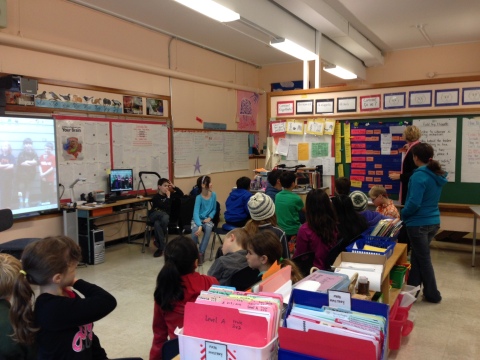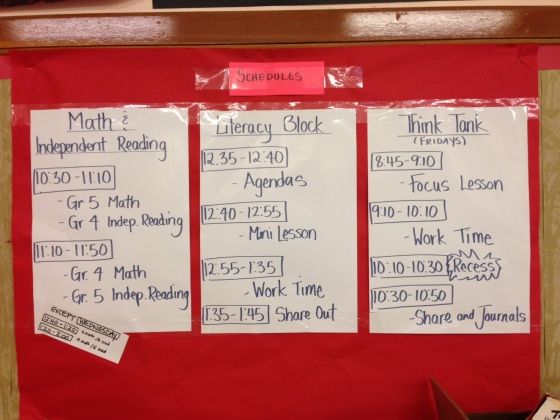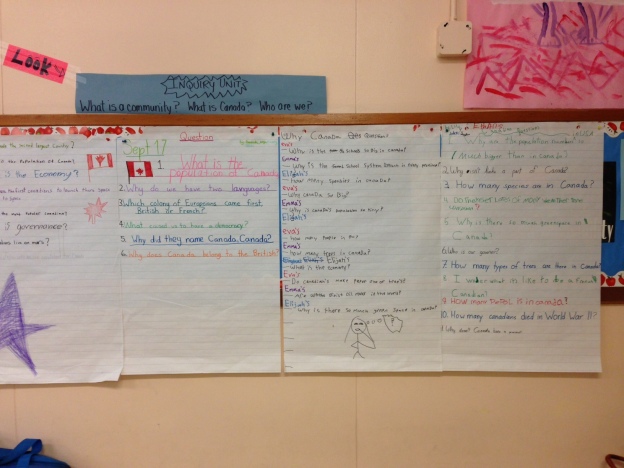Today I was part of a first time event that
@_valeriei organized organized called EdCampWest. The event was complete with an amazing website where participants could interact on – before, during, and afterward the event. The website can be found at
teachdifferent.ca. If you are unfamiliar with the structure of an EdCamp, teachdifferent website says this:
” Edcamp (http://edcamp.org/ ) is an organic, democratic, participant-driven professional development model for people interested in education. There are no keynote presentations, there is no formal pre-set agenda, and participants set the course of the day. Participants at Edcamp are encouraged to contribute ideas in workshops and are invited to share a short presentation and/or propose discussion questions in a safe and supportive environment. Workshops are interactive, conversation-driven and not typical lecture style presentations. If you want to help create and sustain a community of learning, plan on attending!”
Edcamps have been the most effective style of Professional Development I have been a part of yet. It is a new trend that is becoming more and more popular across the continent. Just take a look at the edcamp wiki to see for yourself –
http://edcamp.wikispaces.com .As it was the first
@edcampwest, my brain has been buzzing around for the last few hours thinking of what I liked, what were my main take aways, and how I can innovate pushing forward.WHAT I LIKED: SO MUCHEdcampwest was unique for a few good reasons: there where three sites- Uvic, SFU, and Online. This offered so much opportunity for educators to connect face to face and online across the Province. Not only that, but the participants included educators from both K12, Higher Ed, parents, University students, and people even outside of the education sector. These two aspect broadened the influence, the conversation, and the make up of the day. And it should only grow from here. It was well designed, well planned, and well funded event. It was seamless, well publicized and well supported. For the first edcampwest I think the attendance was great.
The online organization, Uvic site was well organized, the volunteers were on it and helped monitor conversation, the timing of the sessions was great, the networking opportunities were plenty. Overall, the event was amazing. And I think there should be an award for best food.
TAKE AWAYS:
Recognize the Need
As part of being part of innovation in the education system, the first step is recognizing need and then problem solving solutions. I have followed this philosophy tightly for a number of years now. Today, it was clear to me based on comments from colleagues, that there is a lot of need regarding the use and application of technology integration into education. At points it even felt overwhelming. There were some clear thresholds that can come flowing to mind – the late/early adopter teachers, the have/have not students with devices, WIFI issues, BYOD issues, the differentiated school cultures based on staff, students, and admin, and the overwhelming need for educators to catch the fast pace set by the innovative world around us. Teachers require more support, schools require more funding for tools, and students require more personalized learning. And all of this requires time, money, effective ProD, and educators to collaborate.
The Networked Teacher
This idea was reinforced once again today. I shared this image from Alec Couros , of his PhD Thesis Illustration on Twitter as a theme for the conference, on the screen during my group that self organized during session 1 called #sd61learn.
This graphic portrays for me the direction we need to take educators. A networked teacher develops well in an edcamp style ProD setting because there is opportunity to collaborate and network with like minded educators that either share passions for a craft, or critically challenge ideas/pedagogy/practice. Either way, you connect with others, not stuck listening to a lecture, and whispering to your neighbour about plans to collaborate over lunch. The whole day was collaboration, and it was wonderful. We need more of it. It was a sign when as the first session, there was a desire to connect with other educators in #sd61learn, because we have so little time to share together.
INNOVATION AND PROBLEM SOLVING
I think we are at a big risk of establishing isolated classrooms, teachers, and schools that are all rebuilding the wheel. In the spirit of collaboration I have shared all my resources and many have shared back. And yet, there remains such a problem with teachers sharing with each other. Teachers still close doors and resist change. Schools all over the province need more than ever to connect to share best practices, pedagogy, policies, and ideas around technology. Otherwise, we run the risk of building our own silos, that are individualized and isolated.

Yet, I have no idea how to tackle this problem. I see how Twitter can open up informal ways of connecting and sharing, but until teachers recognize the advantage to collaboration, until a teacher buys into the philosophy of the 21st century teacher, then there is too much of a threshold for teacher to see Twitter as a viable resource for ProD. Twitter is my best source of ProD, but I do not know how it will be able to kick start collaboration in my own district.
My brain is still buzzing, and jury is still out. I see the needs in School District 61, but the complexities behind teacher support present real challenges. Today I saw these challenges being met head on, in the style of #edcampwest, and I thank all who were involved for giving us a connected starting point beyond our school district, for moving forward into the next school year.











